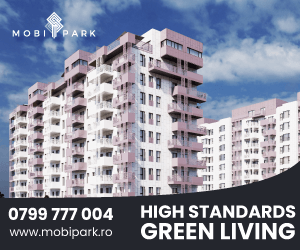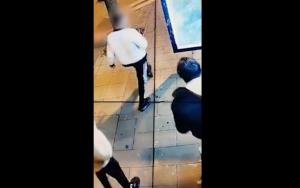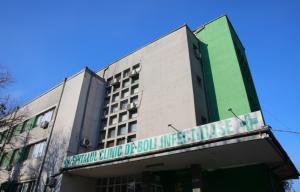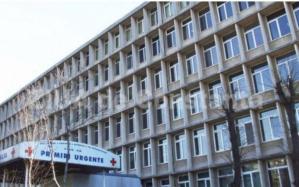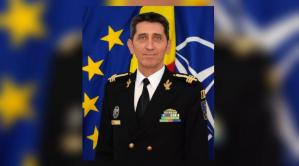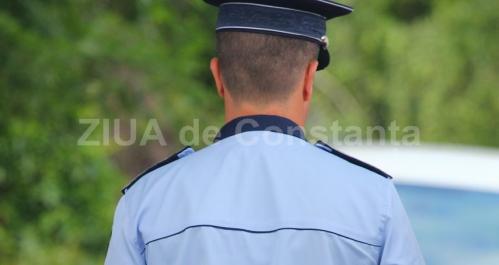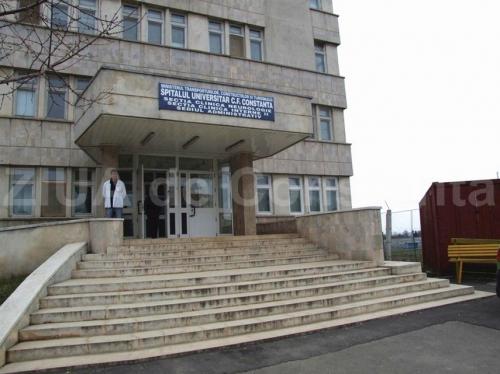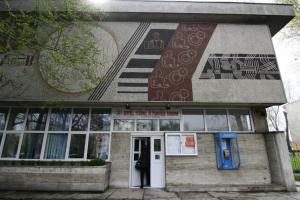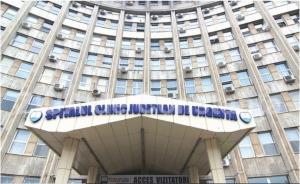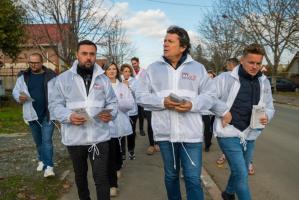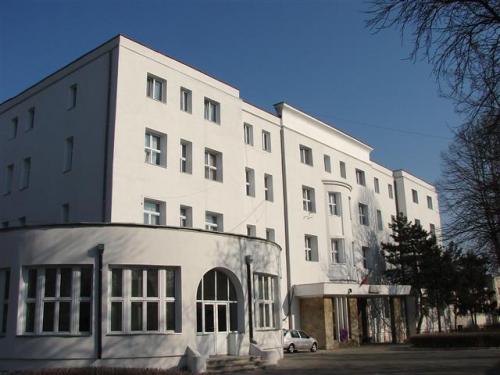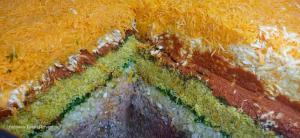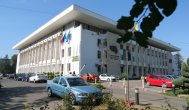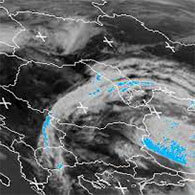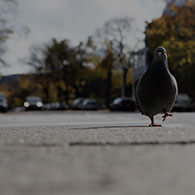LIMITED ELECTION OBSERVATION MISSION
LIMITED ELECTION OBSERVATION MISSION 1497
Marime text
1497
Marime text
Romania — Presidential Election, Second Round, 6 December 2009
STATEMENT OF PRELIMINARY FINDINGS AND CONCLUSIONS
Bucharest,
7 December 2009 – Following an invitation from the Permanent Mission of
Romania to the International Organizations in Vienna, and in line with
the recommendations of the Needs Assessment Mission conducted by the
OSCE Office for Democratic Institutions and Human Rights (OSCE/ODIHR)
in Bucharest on 23–25 September, the OSCE/ODIHR on 28 October deployed
a Limited Election Observation Mission (LEOM) for the presidential
election. The LEOM remained in Romania to observe the second round of
the election.
The second round of the presidential election is
assessed for its compliance with OSCE commitments and international
standards for democratic elections, as well as with Romanian
legislation. This statement should be considered in conjunction with
the Statement of Preliminary Findings and Conclusions issued on 23
November, after the first round of voting. The overall assessment of
the election will depend, in part, on the conduct of the remaining
stages of the election process, including the tabulation, the
announcement of results and the handling of possible complaints and
appeals. The OSCE/ODIHR will issue a comprehensive final report,
including recommendations for potential improvements, some eight weeks
after the completion of the election process.
In line with
standard OSCE/ODIHR methodology for LEOMs, the mission included
long-term observers but not short-term election observers. The LEOM did
not conduct a comprehensive and systematic observation of election-day
proceedings, but visited a limited number of polling stations.
PRELIMINARY CONCLUSIONS
The second round of the 2009 presidential election in Romania confirmed the positive aspects noted during the first round, in particular the overall compliance with OSCE commitments and other international standards for democratic elections, the respect for fundamental political freedoms, the competitive campaign environment, and the efficient administration of the election. While the authorities took steps to remedy some shortcomings noted during the first round of voting and to investigate allegations of irregularities, further efforts are required to address remaining weaknesses in order to improve the election process and strengthen public confidence. In particular, reports of alleged irregularities noted in the second round should be investigated as a matter of urgency.
The campaign took place in a pluralistic and generally calm environment. While campaign activities of the candidates were less intense than in the first round, the candidates used various means to convey their messages to the electorate, which they were able to do freely. Both sides stepped up their negative campaigning, including in the form of election materials which, in violation of existing legislation, were designed in such a way as to closely resemble the actual campaign material of the candidate being attacked. A video clip showing the incumbent President apparently hitting a boy during his 2004 election campaign sparked considerable controversy; President Traian Băsescu denied that the incident had taken place and said the footage had been manipulated.
The election administration continued to work in an overall professional manner, and complied with domestic legislation. The Central Election Bureau (BEC) undertook some measures to address problems observed during the first round, such as slow processing of voters at special polling stations. In a welcome development, the BEC increased the transparency of the process by publishing the results of the first round from all polling stations on its website.
The media as a whole continued to provide varied and ample coverage of the presidential election, which allowed voters to make an informed choice. The candidates could access the media unhindered. Public television and some private channels had less news coverage of the campaign than before the first round, partly reflecting the lower level of campaign activities. Overall, the coverage of public television was balanced, neutral and fair. Some private broadcasters, by contrast, lacked balance and objectivity and took an aggressive stance against the incumbent. The only debate between the candidates, which was broadcast by public television and numerous private channels, served to underline policy differences between the two presidential candidates.
The police received 1,435 reports on election-related incidents on the first-round election day; upon verification, the police confirmed that 724 of these incidents had taken place. The police was notified of 159 cases of suspected criminal offences, including cases of alleged multiple voting involving 312 individuals. However, a thorough investigation of such cases can only commence once the Permanent Election Authority has received and processed the copies of the voter lists used on election day. Two motions to invalidate the first round of the election were filed with the Constitutional Court, which rejected them as groundless. Another motion to invalidate the election in specific polling stations was deemed inadmissible.
According to preliminary data released by the BEC, voter turnout was 58.00 per cent. Partial preliminary results published by the BEC indicate a very close race between the two candidates. As in the first round, voting in the large majority of regular polling stations visited by the OSCE/ODIHR LEOM took place in an overall calm and orderly manner, and procedures were largely followed. In special polling station visited, voting was less problematic than in the first round. The vote count and the tabulation again seemed to be conducted in a professional and transparent manner, with some procedural problems noted. The Ministry of Administration and the Interior announced that it received reports on 194 possible criminal offences on election day and that it had registered 269 minor violations.
PRELIMINARY FINDINGS
Background
On 25 November, the Central Election Bureau (BEC) announced the final results of the first round of the 2009 presidential election, which were validated by the Constitutional Court the following day. The two candidates receiving the highest number of votes and thus contesting the second round were incumbent President Traian Băsescu, nominated by the Democratic Liberal Party (PD-L), who received 32.45 per cent of the valid votes cast, and Speaker of the Senate and President of the Social Democratic Party (PSD) Mircea Geoană, who received 31.15 per cent. Voter turnout in the first round of the presidential election was 54.37 per cent.1
Election Administration
By 24 November, the representatives of all 12 candidates who participated in the first round had the opportunity to receive, through the mid-level election bureaus, electronic copies of all results protocols issued by Polling Station Election Bureaus (BESVs). In a welcome development, the BEC further increased transparency by posting the results from all polling stations on its website. 1 The referendum on parliamentary reform held on the same day was valid as 50.95 per cent of registered voters participated in it; 72.32 per cent of them voted in favor of a unicameral Parliament, and 83.32 per cent in favor of reducing the number of members of Parliament from the current 471 to 300.
According to many representatives of the election administration, many BESVs in the first round made technical mistakes in completing the results protocols; this was also noted by OSCE/ODIHR LEOM observers. Election administration officials at the national and middle level told the OSCE/ODIHR LEOM that such problems were mainly due to insufficient training of BESV presidents and deputy presidents.
Before the second round, the BEC instructed all prefects and mayors to provide polling stations with five voting booths each, corresponding to the number of voting stamps per polling station available for voters to mark their choice on the ballot. The BEC took this step in an effort to address the problem of slow processing of voters, especially in special polling stations where voters who on election day are away from their place of registered residence can vote. During the first round, 4.8 per cent of those who turned out to vote cast their ballots in special polling stations.
According to the Law on the Election of the President of Romania (hereafter: the election law), voting in the second round is conducted in the same polling stations and administered by the same BESVs as in the first round. The administration of the second round was significantly simplified by the fact that it was the only electoral contest, unlike the first round when a nationwide referendum on parliamentary reform was held simultaneously. Few presidents or deputy presidents of BESVs were replaced by the respective mid-level election bureaus between the two rounds.2
Election Campaign
The election campaign for the second round started on 26 November, when the Constitutional Court validated the results of the first round, and ended at 07:00 hours on 5 December. On 25 November, Mr. Geoanǎ and the President of the National Liberal Party (PNL), Crin Antonescu, who had come third in the first round, signed an agreement on cooperation and mutual support in the second round. The agreement included a number of political and socio-economic measures meant to be implemented if Mr. Geoană is elected. The parties also agreed that in this case, Sibiu Mayor Klaus Johannis should become Prime Minister. Later on, the Democratic Union of Hungarians in Romania and the parliamentary group representing national minorities joined the agreement, while some other first-round candidates and their parties also endorsed it. Commenting on the agreement, the incumbent President said that he had no intention to bargain with the votes of the Romanians and that his only partner for the second round was the Romanian elec orate.
As before the first round, the campaign environment was competitive and generally calm; campaign activities were reduced compared to the first-round campaign, in particular public rallies with the candidates themselves. The candidates addressed the electorate mainly through posters, banners and statements. Cases of campaign banners being vandalized were reported from Bucharest, Râmnicu Vâlcea and Mureş, and on 3 December, the PSD and PNL offices in Botoşani were sprayed by unknown perpetrators with anti-Communist slogans and insults against the parties’ leaders. Notably, both sides stepped up their negative campaigning, including in the form of posters, billboards, banners and advertisement in the media which, in violation of existing legislation, were designed in such a way as to closely resemble the actual campaign material of the candidate being attacked by these posters. Such campaign materials were in evidence in Bucharest and the regions, targeting both candidates and the parties supporting them and in some cases linking them to controversial businesspeople.
2 Most of the BESV presidents and vice-president who asked to be replaced formally did so for health or private reasons. However, staff of the BEC told the OSCE/ODIHR LEOM that these replacements were frequently concerning polling stations where shortcomings had been observed on the first-round election day.
On 26 November, a controversial video clip showing Mr. Bǎsescu apparently hitting a boy during his 2004 election campaign was publicized on the website of the newspaper Gardianul and broadcast by all main TV channels. Mr. Bǎsescu denied that this incident had taken place, saying the footage had been manipulated. He initiated legal proceedings against the company which publishes Gardianul and against Dinu Patriciu, a prominent businessman and PNL member, who was the first to talk about the alleged incident in the media and to announce that a video clip proving his claims existed. Mr. Patriciu for his part countersued Mr. Băsescu for slander.
On 1 December, a campaign meeting of Mr. Geoană in Timişoara was disrupted by anti-PSD protesters; police had to separate the two camps. Later that day, outdoor demonstrations in support of the anti-PSD protesters were held in Bucharest and several cities throughout Romania. The Media Between the two rounds, the media as a whole continued to provide ample and varied coverage of the election, thus allowing voters to make an informed choice. Furthermore, candidates had unhindered access to the media.
The first channel of public Romanian Television (TVR 1) and some private channels (Prima TV and Pro TV) provided less coverage of the campaign in their news than before the first round, partly reflecting the lower level of campaign activity. Some private broadcasters, notably Realitatea TV and the Antena network, provided coverage which was not balanced and lacked impartiality, and took an aggressive stance against the incumbent. Overall, TVR 1 offered balanced and impartial coverage of both candidates. In its prime time news, President Băsescu and the PD-L received 28 per cent of the coverage devoted to politics, while Mr. Geoană and the PSD received 24 per cent; Mr. Antonescu and the PNL also played a role in the campaign and received 13 per cent of the coverage. Prima TV news showed a pattern similar to TVR 1. The coverage of Pro TV, Antena 1 and Realitatea TV, by contrast, was more biased against the incumbent. The latter devoted 51 per cent of its news, current affairs and electoral programs to President Băsescu and the PD-L (44 per cent of which was negative in tone, with 35 per cent being positive), while Mr. Geoană and the PSD received 20 per cent (29 per cent negative, 51 per cent positive), and Mr. Antonescu and the PNL received 8 per cent (19 per cent negative, 53 per cent positive).
The only televised debate between the two candidates took place on 3 December, with both candidates presenting their platforms and exchanging views on previously agreed topics. The threehour long debate was aired live during prime time on TVR 1 and a number of private channels, thus reaching a considerable number of voters, and served to underline policy differences between the two presidential candidates.
Among the newspapers monitored by the OSCE/ODIHR LEOM, Evenimentul Zilei, Gândul and România Liberă were more balanced, while Jurnalul Naţional and Cotidianul were biased against the incumbent.
After the first round, the National Audiovisual Council (CNA) imposed 14 fines ranging from 5,000 to 20,000 Romanian Lei (around 1,200–4,700 Euro) against nine private TV channels for various violations of the election law and other legislation, including for breaches of the campaign silence provision.
Complaints and Appeals
After the first-round election day, over 60 complaints were filed with County Election Bureaus (BEJs), and around 40 appeals on BEJs’ decisions with the BEC. The vast majority of these complaints and appeals pertained to the content of campaign materials. In cases where the logo of the PSD was used without the party’s consent and in cases where the content was deemed defamatory to the incumbent President and inciting to violence, the BEC ordered that posters and banners be removed. Although in at least four instances, breaches of Article 29.2 of the Law on the Funding of Political Parties’ Activities and Election Campaigns3 were ascertained by BEJs and the BEC, no sanctions were imposed before the second-round election day by the Permanent Election Authority (AEP), which is the competent body for the implementation of this law.
According to the Ministry of Administration and the Interior (MAI), the police received 1,435 reports on election-related incidents on the first-round election day; upon verification, the police confirmed that 724 of these incidents had taken place. Fines were imposed in 121 cases of minor administrative offences, mostly concerning campaigning during the campaign silence period and selling alcohol in the vicinity of polling stations.4 The police was notified of 159 cases of suspected criminal offences, including cases of suspected multiple voting involving 312 individuals. The MAI informed the OSCE/ODIHR LEOM that as of 2 December, criminal proceedings against nine persons had been initiated. With regard to cases of suspected multiple voting, thorough investigations can only be conducted once the AEP has processed the copies of the voter lists used on election day, which is expected to take several months.
According to the election law, political parties and candidates can, within three days of the closing of the polls, file petitions with the Constitutional Court requesting the annulment of an election, in case fraud was committed to such an extent that it could potentially have altered the result. Three such petitions were filed after the first round. The Greater Romania Party and independent candidate Constantin Ninel Potîrcă requested the annulment of the first round, the former on the grounds of alleged irregularities, and the latter on the grounds that the Constitutional Court did not examine a petition he filed before the first round on the unconstitutionality of certain provisions of the election law. The Court dismissed both petitions as groundless, since no evidence of the alleged fraud was provided. The PSD requested the annulment of the election in four polling stations in the commune of Slatina (Suceava county), due to irregularities. These irregularities were also ascertained by the Suceava BEJ, hich replaced the presidents of these polling stations. Since the election law only foresees the annulment of an election for the entire country, the Constitutional Court ruled that this petition was inadmissible, noting that in any case, these irregularities did not affect the results. Election Day
Election Day
According to preliminary data released by the BEC, 58.00 per cent of registered voters turned out to vote. Of these, 617,135 voted in special polling stations in Romania, and 147,754 voted abroad. As in the first round, voting in the large majority of regular polling stations visited by the OSCE/ODIHR LEOM took place in an overall calm and orderly manner, and procedures were largely followed. In most special polling stations visited, voting was less problematic than in the first round; processing of voters was noticeably faster, mainly due to the fact that no other electoral event was held concurrently. Nonetheless, in a few special polling stations visited the process was again relatively slow. In some polling stations visited, domestic observers said they were observing on behalf of certain candidates or parties. The MAI reported that it received reports of 194 possible criminal offences related to election day, including vote buying and multiple voting. Two individuals were detained. The Ministry also registered 269 minor violations.
The BEC released partial preliminary results at 08:00 hours on 7 December, but again not by polling station. These results indicate a very close race, with the incumbent slightly ahead. The PD-L and the PSD both released parallel vote tabulation results according to which their candidate had won narrowly. The PSD claimed that a high number of irregularities had occurred and announced that it had asked its BEJ members not to sign the results protocols. As during the first-round election day, several Internet sites, including those of major media outlets, published exit poll results before the
polls closed, in violation of the election law.
In polling stations visited, the vote count was again carried out in a professional, transparent and orderly manner, and only few minor procedural problems were observed. However, results protocols were frequently not posted at the polling station, although the election law requires this. The tabulation at BEJ level again seemed to be professional and efficient, although in some instances minor corrections to BESV results protocols had to be made.
This statement is also available in the Romanian language. However, the English version remains the only official document.
MISSION INFORMATION & ACKNOWLEDGEMENTS
The OSCE/ODIHR Limited Election Observation Mission (LEOM) opened in Bucharest on 28 October with 11 experts in the capital and 14 long-term observers deployed throughout Romania. Vadim Zhdanovich is the Head of the OSCE/ODIHR LEOM. Mission members are drawn from 17 OSCE participating States. The OSCE/ODIHR LEOM wishes to thank the authorities of Romania for the invitation to observe the elections, the Central Election Bureau and the Permanent Election Authority for their co-operation and for providing accreditation documents, and the Ministry of Foreign Affairs and the Ministry of Administration and the Interior for their assistance and co-operation. The OSCE/ODIHR LEOM also wishes to express appreciation to other national and local state institutions, election authorities, candidates, political parties and civil society organizations for their co-operation.
For further information, please contact:
• Mr. Vadim Zhdanovich, Head of the OSCE/ODIHR LEOM, in Bucharest (+40–21–200 6747);
• Mr. Jens Eschenbächer, OSCE/ODIHR Spokesperson (+48–603–683 122); or Mr. Mats Lindberg,
OSCE/ODIHR Election Adviser, in Warsaw (+48–22–520 0600 or +48–691–980 559).
OSCE/ODIHR LEOM Address:
Union International Center, 4th floor
str. Ion Câmpineanu 11
Bucharest, Romania
Tel: +40–21–200 6747, Fax:
Email: office@odihr.org.ro
Urmareste-ne pe Grupul de Whatsapp
 Fondul Documentar Dobrogea de ieri și de azi
Fondul Documentar Dobrogea de ieri și de azi



